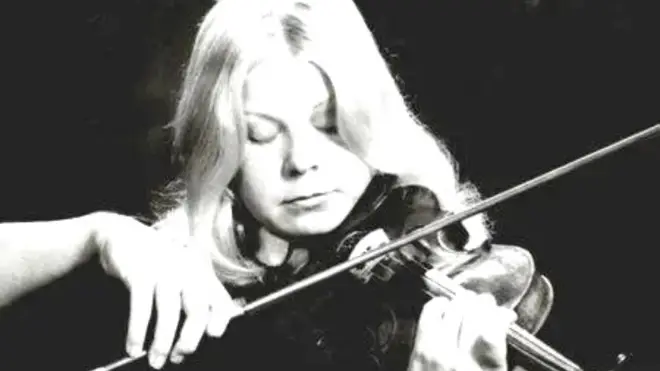The tragic tale of a top violinist who vanished mid-performance at New York’s Met Opera House
12 September 2024, 15:34 | Updated: 12 September 2024, 16:05

The story of a young violinist who disappeared from the orchestra pit during a performance at the Metropolitan Opera House 44 years ago.
Listen to this article
On 23 July 1980, the curtain rose on the Berlin Ballet, who were guest performing at New York’s legendary Metropolitan Opera House.
In the orchestra that night sat a 30-year-old violinist, Helen Hagnes Mintiks. A Juilliard graduate, Mintiks was an award-winning performer, who had made her professional solo debut with the Seattle Symphony while still a teenager.
The programme for that night of the Berlin Ballet’s 11-day residency at the Met was a four parter; Stravinsky’s The Firebird, Piazzolla’s Five Tangos, Ludwig Minkus’s Don Quixote, and Miss Julie by Ture Rangström.
After playing Stravinsky’s score, the orchestra, including Mintiks left the stage as Five Tangos used pre-recorded music, so the musicians used the 45 minute-long ballet to take a break.
However, when the orchestra was summoned back at 9.30pm to perform Don Quixote, there was an empty chair in the violin section, belonging to Mintiks.
Read more: When Maria João Pires learned the wrong piano concerto, but had a ‘miraculous’ recovery

The search for Helen Mintiks
At 11.30pm once the show had ended, Mintiks was still missing. Friends were concerned as they knew she wouldn’t have left the building without her violin, which she had left on her chair after the first work of the night.
The authorities were contacted, and after looking through her locker and realising the clothes she had travelled to the venue in were still there, surmised she must still be in the building.
Police searched the building, and at 8.30am the following morning, found Mintiks’s body. She had been thrown from the Met’s sixth-story roof into a ventilation shaft. Her body had fallen 30 to 45 feet and she had died some time between 9pm to 11.30pm that night.
In light of the discovery, a police spokesperson said that a team of 25 detectives would interview every Met employee – over 800 staff – in the next 24 hours.
After a day-long autopsy, the New York chief medical examiner concluded that the death was “the result of a fall”, and that Mintiks was alive when she was thrown from the roof.
She was found bound and blindfolded, and due to the knots tied, authorities were able to link this technique back to the Met’s stagehands. This tied in with the police’s theory that the killer was familiar with the Met’s maze-like backstage area.
Read more: The opera that killed its star – the eerie story of how Leonard Warren died on stage

Murder At The Met programme to explore death of Helen Hagnes Mintiks
The night of the incident, a stagehand, the then 21-year-old Craig Crimmins, was seen telling Mintiks that a dancer she was looking for was on the fourth floor.
A witness told the authorities that this was untrue, as the dancers were all on ground level, and it was suggested that Crimmins had made up this fact to get the young violinist alone in an elevator with him.
Crimmins had also been missing for his cue when Mintiks failed to return to her seat.
After bringing the stagehand in for questioning multiple times, Crimmins confessed to the murder of Mintiks.

In 1981, Crimmins was sentenced to 20 years to life in prison for the murder and attempted rape of Helen Hagnes Mintiks.
He has attempted to apply for parole every two years since 2000, but for over 20 years was denied each time, due to the severity of his crime. Crimmins, who learnt violin in prison and played in the facility’s orchestra, was released on parole in August 2021.
Read more: Case Notes: the award-winning true crime podcast from Classic FM
Mintiks was well spoken of by her friends. One friend, Kerry Voight, told the Washington Post at the time of her death that, “Helen was the kind [of person] who would come to your house for dinner and bring along the ‘dinner’.”
She was survived by her husband, the late sculptor Janis Mintiks, who would go on to sue the Met Opera after his wife’s death.
Unfortunately Mintiks would not be the last fatality at the Metropolitan Opera House.
Other incidents include the 1996 on-stage death of tenor Richard Versalle, who died while playing the role of Vitek during a production of Leoš Janáček’s The Makropulos Case, and the 1988 suicide of operagoer, Bantcho Bantchevsky.




